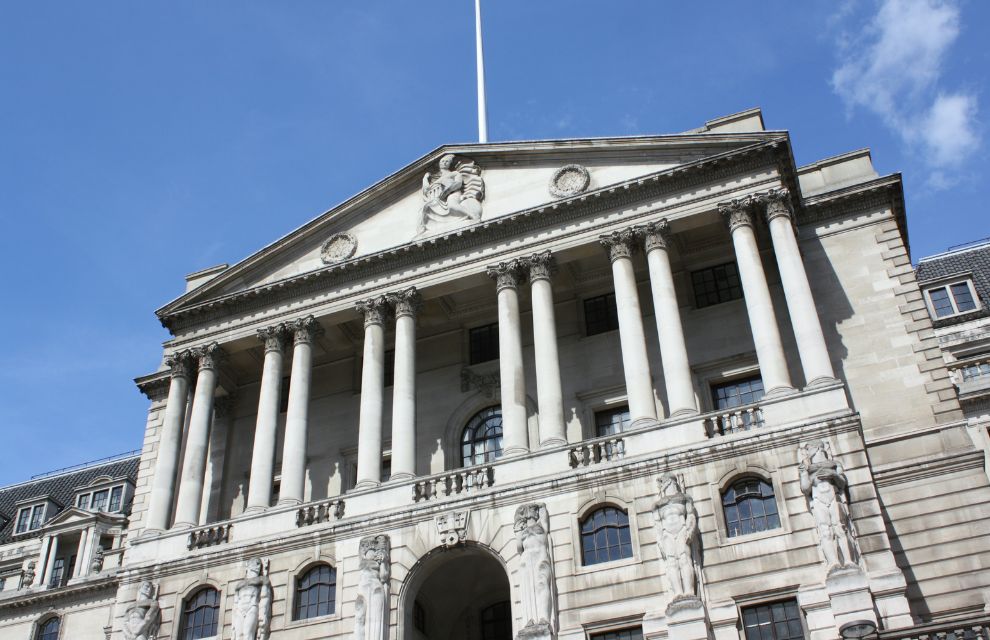The Bank of England (BoE) has released a staff working paper analysing the 2022 gilts market crisis.
The paper, authored by Gabor Pinter, draws on transaction-level data from government bond, repo and interest-rate swap (IRS) markets to evaluate movements in market liquidity, price trends and investor behaviour during the market disturbance in September and October 2022.
With a sharp rise in gilt yields following the UK mini-budget of 23 September 2022, some pension fund and asset managers with significant exposure to highly-leveraged liability-driven investment (LDI) strategies experienced a deterioration of their repo and derivatives positions and significant rises in collateral and margin requirements.
Some were forced to liquidate gilt positions to access cash to meet these margin requirements, triggering a further rise in gilt yields and liquidity tightening in gilt markets, prompting the BoE to intervene to restore orderly market functioning.
The paper finds that total net sales of gilts between 23 September and 14 October exceeded £36 billion, with sales being particularly pronounced for index-linked gilts and spread relatively evenly across the maturity spectrum, whereas sales of conventional gilts were relatively much smaller and focused at the longer maturities, typically 10 years and above.
The impact of this disruption was quite concentrated, with three liability-driven investment pension and insurance firms (LDI-PI) accounting for more than 70 per cent of LDI-PI sector gilt sales to primary dealers during the crisis.
This finding is consistent with “the LDI-PE sector being highly concentrated, with a few firms generating most of the LDI-PI activity in the UK market,” the paper explains. From regression analysis, it concludes that gilt sales by these firms had a significant price impact on the gilts market.
Perhaps unsurprisingly, the impact of interest rate rises was felt most severely by LDI-PI firms that had larger interest rate exposures in repo and swap markets. Regression analysis indicates that a 1 per cent rise in interest rate exposure in the overnight index swap (OIS) market corresponded with a 0.52 per cent rise in gilt liquidations by LDI-PI firms as they came under selling pressures during the crisis.
This effect becomes less significant when firms’ exposure in the secured repo market is also factored in. The paper concludes that the pre-crisis repo market exposure, where index-linked gilts are used as collateral, was the primary driver for gilt sales. A 1 per cent rise in linker-repo exposure prior to the crisis (on 22 September) resulted in a 0.49 per cent rise in gilt liquidations between 23 September and 14 October for the LDI-PI firms monitored in the sample.
With these selling pressures, transaction costs rose sharply in the market from 23 September, indicating a contraction in market liquidity, with trading in nominal gilts being affected most severely, followed by linkers. The paper finds that in cases where trading relationships were strong at the onset of the crisis — indicated by strong pre-crisis trading volumes between the primary dealer and the client — this often provided some mitigation of these transaction cost hikes.
On balance, the author finds that hedge funds served as liquidity providers to the LDI-PI sector during the crisis, but these liquidity volumes were relatively modest and were commonly timed by these hedge funds to maximise the returns that they could gain as cash providers during the crisis.
“The average hedge fund received significant compensation for liquidity during the crisis period,” says the paper. “Hedge funds as liquidity suppliers pursued contrarian strategies and increased their gilt purchases as yields were increasing (p 32).”
“Overall, one interpretation of these results is that the high hedge fund returns during the crisis were compensation for liquidity provision to the LDI-PI sector,” it says. “The outperformance of liquidity-supplying hedge funds points to less-binding financing constraints in this sector — consistent for example, with windfall gains hedge funds realised on their OIS positions against LDI-PI firms” (p 33).
In parallel, the paper concludes that hedge funds’ positioning in the overnight index swap market meant that some hedge funds experienced large mark-to-market gains on these derivatives positions during the crisis period, with LDI-PI firms realising significant losses on the other side of these trades (p 32).
Examining this positioning in the index rate swap market more closely, the paper finds that the LDI-PI sector is substantially the largest fixed-rate receiver in the market, with an interest rate exposure of £185 billion. The principal counterparties are hedge funds, with net position of £155 billion, and other clients, with net position of £120 billion.
Particularly for OIS contracts with maturity of five years or longer, the paper finds that the LDI-PI sector is virtually the only net payer of the floating leg, with dealers, hedge funds and other clients standing on the other side of these contracts.
“The spikes in interest rates during the outbreak of the crisis led to a quick deterioration of the LDI-PI sector’s swap positions,” it says.
Mark-to-market values of these contracts dropped sharply — by an estimated £8 billion between 23 and 27 September — resulting in sizeable margin calls from counterparties and putting pressure on the sector’s funding capacity. The LDI-PI sector also took steps to reduce its net exposure during the crisis, lowering its absolute position in absolute value by approximately £23 billion by October 14.
In parallel, the LDI-PI sector was subject to mark-to-market losses in inflation swap positions and consistently reduced its net position during the crisis, resulting in a fall of approximately £2 billion by 14 October.
For repo transactions the LDI-PI sector reduced its net repo exposure by close to £33 billion as it progressively sold off gilts positions in the face of the challenges outlined above. At the start of the crisis, LDI-PI firms had collectively financed £40 billion in liquidity through repo trades secured by nominal bonds and a further £90 billion through repos backed by index linked securities.
Hedge funds represented the major cash providers to LDI-firms through repo trades backed by nominal gilts, with a net negative position of close to £65 billion. This is indicative of the hedge fund sector adopting short positions in the gilt market prior to the crisis, the paper says. Primary dealers represented the largest lenders to LDI-PI firms via linker-backed repos, with a negative net position of around £100 billion.
The paper is titled, An Anatomy of the 2022 Gilt Market Crisis, and is published by the Bank of England as Staff Working Paper No 1019, March 2023.

.jpg)


